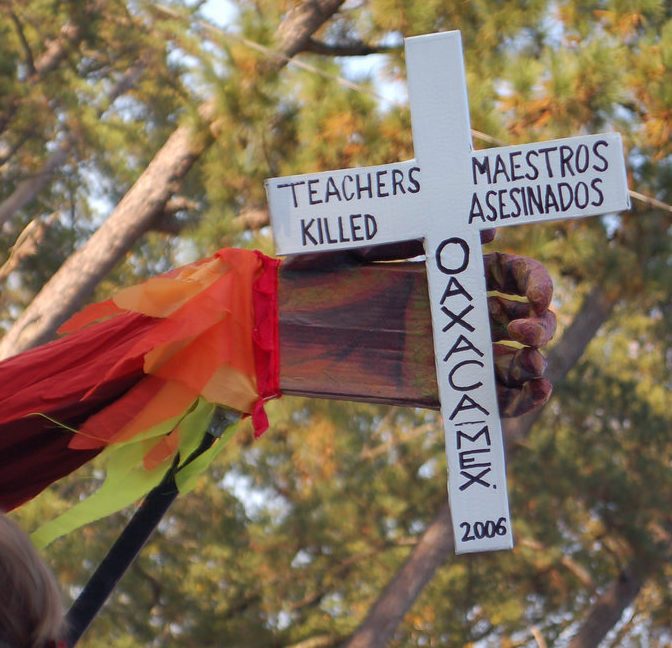
June 20, 2016, Washington Post
Protest for education reform in America is almost always conducted civilly, if not artfully, such as with the acclaimed documentary Waiting for Superman. Education reform critic Randi Weingarten, president of the American Federation of Teachers, no doubt has one of the toughest jobs in the country, defending the value of traditional public schools against private and parochial schools, the growth of homeschooling, and the encroachment of charter schools as an alternative public education option competing for students, teachers, and funding within public school districts. Americans fight over ownership of the term “education reform” and fight over their opposing views of the Common Core State Standards.
In Mexico this past weekend, teachers from the National Coordinator of Education Workers (CNTE) who stand opposed to mandatory testing of teachers as part of Mexico’s education reform and the arrest of their colleagues blockaded roads in Oaxaca, Mexico in a weeks-long strike.
Six people were killed and more than 100 injured, including federal and state police. Protesters threw stones and Molotov cocktails; riot police fired on the demonstrators. Protest leaders claimed that eight were killed and 22 people had disappeared.
Mexico’s National Human Rights Commission said it would open an investigation into the deaths. Some analysts blamed the federal government for the violence. “They know the limitations of the Mexican cops. Despite that, they sent them in there with guns,” said Rodolfo Soriano-Nuñez, a sociologist who formerly worked in the federal education ministry. “The whole thing is a mess.” Peña Nieto’s administration has made education reform—and wresting power from the teachers union—a priority. Authorities opposed how the union’s dissident factions could control decisions over state education budgets, teacher appointments and other administrative decisions.
Sign up for our free newsletters
Subscribe to NPQ's newsletters to have our top stories delivered directly to your inbox.
By signing up, you agree to our privacy policy and terms of use, and to receive messages from NPQ and our partners.
The National Security Commission initially claimed that the federal and state police were unarmed. But raw footage taken by the Associated Press showing at least one police officer firing a gun forced their story to change. The authorities conceded that the police were armed, but claimed that they and the protesters were fired upon by outside elements.
Oaxaca is a tourist destination. But the education system there is impoverished.
In the poor southern region where Oaxaca is located, teachers are tasked with the daily challenge of providing shelter and food for their students, along with the mandate to boost test scores and improve reading comprehension. There, teachers quite literally must build the schools in which they work and then find furniture to fill their classrooms. Students arrive at school barefoot, ache with intestinal parasites, and learn native languages before Spanish.
This violent clash evokes memories of the 2006 teacher union uprising in Oaxaca. All sides were accused of corrupt behavior. “There are no saints, there are no heroes, down there,” said Soriano-Nuñez.—James Schaffer













